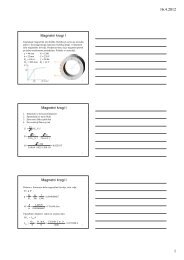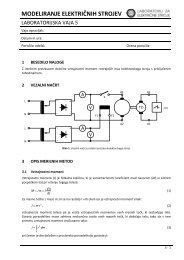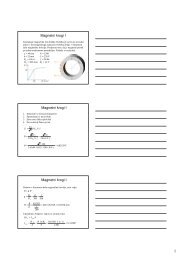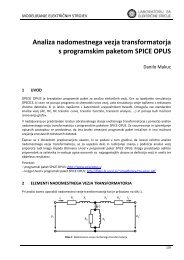Maxwell SV Getting Started: A 2D Magnetostatic Problem - LES
Maxwell SV Getting Started: A 2D Magnetostatic Problem - LES
Maxwell SV Getting Started: A 2D Magnetostatic Problem - LES
Create successful ePaper yourself
Turn your PDF publications into a flip-book with our unique Google optimized e-Paper software.
<strong>Getting</strong> <strong>Started</strong>: A <strong>2D</strong> <strong>Magnetostatic</strong> <strong>Problem</strong><br />
8. Use the Solve command to solve for the appropriate field quantities.<br />
9. Use the Post Process command to analyze the solution.<br />
These commands must be chosen in the sequence in which they appear. You must first create a geometric<br />
model using the Define Model command before you specify material characteristics for<br />
objects using the Setup Materials command. A check mark appears on the menu next to each step<br />
which has been completed.<br />
Select solver and drawing plane.<br />
Draw geometric model and<br />
(optionally) identify grouped objects.<br />
Assign material properties.<br />
1-4 Introduction<br />
Assign boundary conditions and sources.<br />
Compute other<br />
quantities during<br />
solution?<br />
No<br />
Set up solution criteria and<br />
(optionally) refine the mesh.<br />
Generate solution.<br />
Yes<br />
Inspect parameter solutions; view<br />
solution information; display plots of<br />
fields and manipulate basic field<br />
quantities.<br />
Request that force, torque,<br />
capacitance, inductance,<br />
admittance, impedance, flux<br />
linkage, core loss, conductance,<br />
or current flow be computed<br />
during the solution process.
















